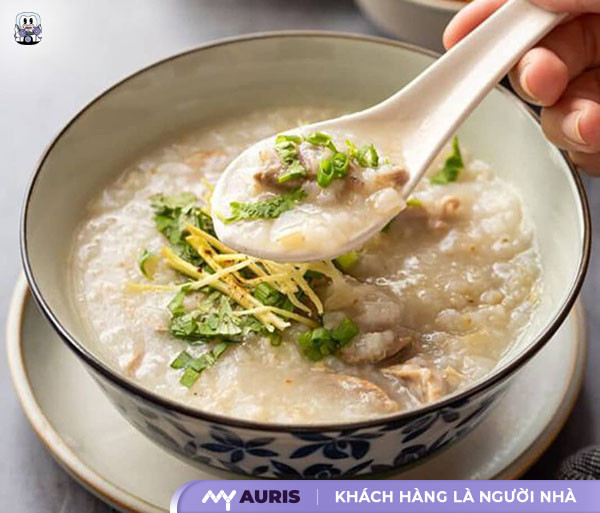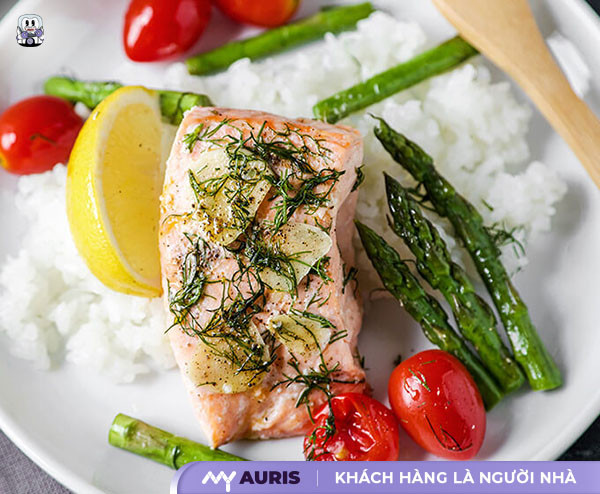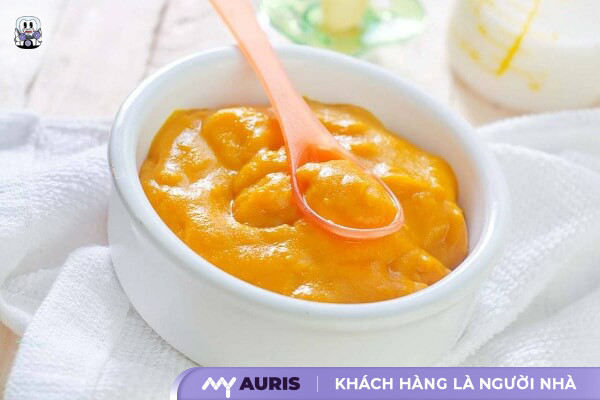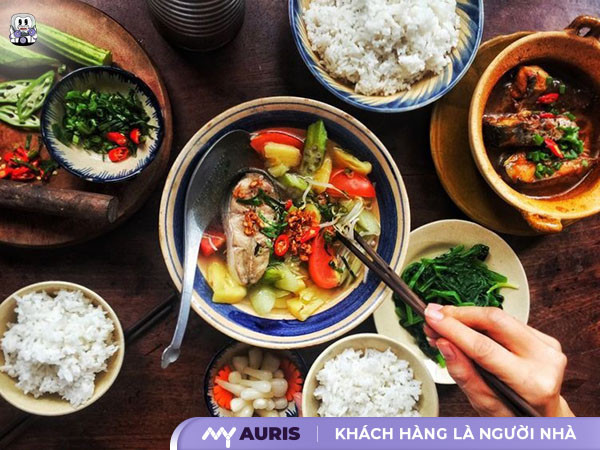Have you just started your braces journey? Pain, soreness, and discomfort when chewing are inevitable. A proper diet will help you get through this difficult period, while ensuring your orthodontic treatment proceeds smoothly and quickly. This article will share “golden” foods to help you take the best care of your oral health throughout your braces treatment, from the initial stage until you can eat comfortably again.
Golden Rules for Eating When You First Get Braces
Three top criteria for choosing food during the initial braces period (what to eat when you first get braces?):
Soft: Food must be soft enough to avoid causing pain, and not damage teeth, gums, and braces. This is the most important factor in the initial stage, especially during the adaptation period. Prioritize pureed foods, mashed foods, soups, smoothies. Rice should be cooked very tender and soft.
Nutritious: Although soft foods are prioritized, your diet must still provide all the essential nutrients for your body, supporting a smooth orthodontic process. Combine a variety of foods to provide enough protein, carbohydrates, fiber, and vitamins. Liquid foods, mashed foods, soups, smoothies, and soft foods all need to be fully supplemented with nutrients.
Easy to Clean: Oral hygiene with braces is more important than ever. Choose foods that are less likely to stick to your braces, making it easier to clean your teeth and prevent cavities and gum inflammation. Limit foods that easily get stuck between braces, such as nuts, chewy foods, and hard-to-chew items.
In the initial stage of braces, you need to pay special attention to the softness of your food. Recovery time and soreness will vary from person to person, but usually decrease after a few weeks:
Weeks 1-2: Prioritize liquid foods such as soups, smoothies, and porridge. Rice should be cooked very tender, even pureed.
Weeks 3-4: Start introducing soft foods like mashed pumpkin, soft rice, and minced meat. Don’t forget to check the softness of the rice by gently pressing it with a fork: if the rice grains don’t hold their shape, it means they are soft enough to eat.
After 1 month: If you no longer experience pain, you can gradually resume eating normal rice, but should still limit hard, difficult-to-chew foods. A proper post-braces diet should be maintained to ensure oral health.

Golden Foods for Those Who Just Got Braces
Protein Group
Protein plays a vital role in building and repairing tissues, especially essential during orthodontic treatment. To provide enough protein while ensuring softness for easy chewing, you should choose:
Softly prepared chicken, pork, and beef:
- Pâté: Put minced meat with finely chopped onions, carrots, and seasonings (salt, pepper, seasoning powder) into a blender. Blend until the mixture is smooth. Steam the mixture in a double boiler for about 30 minutes or cook it in a small pan over low heat for about 20-25 minutes, stirring constantly. Pâté is an easily digestible and very nutritious dish after getting braces.
- Bolognese Sauce: Sauté minced onion with olive oil. Add minced meat and cook until browned. Add pureed tomatoes, broth, and seasonings, then simmer until the sauce thickens. Bolognese sauce can be served with short-cut udon noodles or soft rice, creating a nutritious meal for orthodontic patients.
Steamed Salmon:
Salmon is rich in Omega-3s, which help reduce gum inflammation and support the healing process in the mouth. Steam salmon until it is tender and easy to chew and swallow. This is an ideal dish for a post-braces diet. Steaming time depends on the thickness of the fish fillet, usually about 15-20 minutes is sufficient. You should choose fresh, unspoiled salmon to ensure the quality of the dish. This is also an excellent choice for easily digestible food after braces.

Vegetable Group
Vegetables provide essential vitamins and minerals, supporting oral and facial health. However, you need to choose soft, easy-to-chew varieties:
Mashed Pumpkin:
Boil pumpkin until very tender. Mash the pumpkin with a spoon, adding a little unsweetened fresh milk to create a smooth consistency. Mashed pumpkin provides vitamin A and essential fiber. You can add a little unsweetened yogurt to enhance the flavor.
Spinach and Banana Smoothie:
Put spinach, banana, and fresh milk (or nut milk) into a blender. Blend until the mixture is smooth. Smoothies provide plenty of fiber, vitamins, and minerals essential for oral health. You can adjust the ratio of spinach and banana to suit your taste.

Smart Carbohydrates
Carbohydrates provide energy, but you need to choose soft, easily digestible types:
Oatmeal with Cheese Porridge:
Cook oatmeal according to package directions. When the porridge is cooked, add grated cheese and stir well. This dish provides protein, calcium, and fiber. You can add a little honey to increase sweetness if desired.
Soft Rice with Meat Sauce:
Cook rice until soft, then mash it with a spoon. Combine with meat sauce (like the Bolognese sauce instructed above) to create a complete and nutritious meal. To achieve ideal softness for the rice, you should rinse the rice thoroughly and soak it for about 30 minutes before cooking. Adding a little more water than usual when cooking will help the rice become softer.
7-Day Non-Repetitive Meal Plan for Those Who Just Got Braces
This menu is specifically designed for those who just got braces, especially during the initial stage when soreness and difficulty chewing are still prevalent. This is a dietary guide for braces wearers, helping you quickly adapt to your new diet:
Day 1: Focus on liquid and pureed foods.
- Breakfast: Smooth oatmeal porridge cooked with unsweetened fresh milk, with a little soft cheese.
- Lunch: Smooth mashed pumpkin soup, combined with a few pieces of tender steamed salmon. Salmon, rich in Omega-3s, helps reduce gum inflammation, a common issue when first getting braces.
- Dinner: Banana, spinach, and unsweetened yogurt smoothie. A simple recipe that provides essential vitamins and minerals.
Day 2: Add easily chewable dishes.
- Breakfast: Unsweetened Greek yogurt with a few slices of soft banana.
- Lunch: Soft-cooked mashed rice (softness instructions will be in a later section), served with minced chicken made into pâté.
- Dinner: Pumpkin soup with soft tofu, limiting hard vegetables.
Day 3: Gradually increase food firmness (but still soft).
- Breakfast: Soft bread torn into small pieces, dipped in warm milk.
- Lunch: Short-cut udon noodles, served with soft tofu in egg sauce.
- Dinner: Salmon porridge with pureed vegetables.
Day 4: Continue to diversify soft foods.
- Breakfast: Pureed chicken soup, with small-cut spaghetti.
- Lunch: Mashed pumpkin mixed with yogurt.
- Dinner: Mango, yogurt, and a little oatmeal smoothie.
Day 5: Add supplemental options.
- Breakfast: Cooked oatmeal with almond milk.
- Lunch: Soft rice, minced meat in tomato sauce (bolognese).
- Dinner: Vegetable soup with pureed lean meat.
Day 6: Focus on overall nutrition.
- Breakfast: Soft steamed eggs, served with soft toast.
- Lunch: Soft rice, steamed salmon, pureed green vegetables.
- Dinner: Mung bean soup with pureed lean meat.
Day 7: Maintain balance.
- Breakfast: Fruit smoothie (banana, apple, strawberry).
- Lunch: Soft spaghetti, tomato sauce, minced meat.
- Dinner: Plain porridge, soft boiled chicken, pureed vegetables.
How Long Until You Can Eat Rice with Braces?
Weeks 1-2: In the first few days after getting braces, soreness and discomfort are unavoidable. Your body needs time to adapt to the changes. During the first week, soft, liquid foods are the optimal choice. Say goodbye to hard, difficult-to-chew dishes. Your diet should include porridge, soup, smoothies, pureed foods, and various stews. The main goal is to minimize pain and allow your mouth to get used to the braces.
Weeks 3-4: After about two weeks, you can start experimenting with rice. However, the rice needs to be mushy, moist, and soft. Imagine the rice grains almost dissolving when you gently press them with a fork. If the rice grains retain their shape, it means the rice is still too hard and not suitable. You should still limit hard, difficult-to-chew foods.
After one month: If you no longer experience significant pain or discomfort, you can start eating normal rice after one month. However, it’s still advisable to limit excessively hard, difficult-to-chew foods for an extended period.

Common Dietary Mistakes That Slow Down Braces Treatment
Eating Foods That Are Too Hard or Chewy Causes Damage to Teeth and Braces
In the initial stage of braces, your teeth are very sensitive. Eating excessively hard foods like tough meat, bones, crispy bread, hard candies, etc., will cause pain, loosen, or even break your braces. This not only causes discomfort but also prolongs treatment time, slowing down the braces process.
Chewing on One Side Causes Malocclusion and Affects Braces Results
Many people have a habit of chewing on one side, especially when first getting braces and experiencing soreness. However, this creates an imbalance in chewing force, leading to malocclusion and affecting long-term braces results. To avoid this, try to chew evenly on both sides of your mouth.
Over-relying on Smoothies While Lacking Roughage Affects Digestion
Smoothies are a convenient choice for those with new braces because they are easy to drink and digest. However, over-relying on smoothies while neglecting other roughage-rich foods can lead to a lack of fiber, causing indigestion and constipation.
Eating Foods That Are Too Hot or Too Cold Causes Tooth Sensitivity
The temperature of food also affects the oral sensation of people with braces. Eating foods that are too hot or too cold will cause tooth sensitivity, discomfort, and even damage to the gums. Eat foods at an ideal temperature to protect your teeth and gums.
Insufficient Oral Hygiene Easily Leads to Gum Inflammation
Braces are an ideal environment for bacteria to grow. Therefore, thorough oral hygiene is more important than ever. Proper brushing, using dental floss, and medical mouthwash are important measures to prevent gum inflammation, cavities, and other oral diseases.
Frequently Asked Questions About Diet When Wearing Braces
Can You Eat Instant Noodles with Braces?
Many people enjoy instant noodles for their convenience. However, instant noodles are hard, difficult to chew, and can easily damage teeth when you first get braces. Eating instant noodles with new braces can cause pain, or even loosen or break a bracket. So what’s the solution?
You can absolutely eat instant noodles, but you need to keep the following in mind:
Soak the noodles thoroughly: The noodles must be very soft, almost dissolving in water. Check by gently pressing with a fork; if the noodles don’t hold their original shape, they are soft enough.
Cut noodles into small pieces: Cut the noodles into short, small, easy-to-swallow pieces to minimize chewing force.
Limit spicy seasonings: Spicy seasonings can irritate gums and increase discomfort.
Eat slowly, chew thoroughly: Even though the noodles are soft, you still need to chew carefully to avoid getting them stuck in your braces.
Do You Need to Completely Avoid Grilled Food?
Grilled foods, especially crispy, hard parts, are very difficult to chew and can damage braces. However, this doesn’t mean you have to completely avoid grilled food. You can still enjoy grilled dishes but need to keep the following points in mind:
Choose soft parts: Select soft, easy-to-chew cuts of meat. Avoid crispy skin and hard bones.
Cut food into small pieces: Cut meat into bite-sized pieces to reduce chewing force.
Chew thoroughly: Chew slowly and carefully to avoid damaging your braces.
Limit grilled food initially: During the early stage of braces, when your teeth are still sensitive, limit eating grilled food to avoid pain and damage.
How to Eat Bread Without Harming Your Braces?
Bread is a common food, but it can be a challenge for those with new braces. Hard bread crusts can easily break or loosen brackets. To enjoy bread without harming your teeth, follow these steps:
Tear bread into small pieces: Tear the bread into small, soft pieces.
Dip in warm milk: Dip the bread into warm milk to soften it.
Chew thoroughly: Chew carefully to reduce chewing force on your teeth and braces.
Limit hard bread: During the initial stage of braces, you should limit eating bread, especially types with hard crusts.
If you have difficulty choosing food or have any questions, please contact My Auris Dental Clinic. Our team of experts will advise you on a suitable diet, ensuring your oral health and effective braces treatment. We are committed to providing the best service, helping you feel confident with a radiant smile. Schedule an appointment today.





